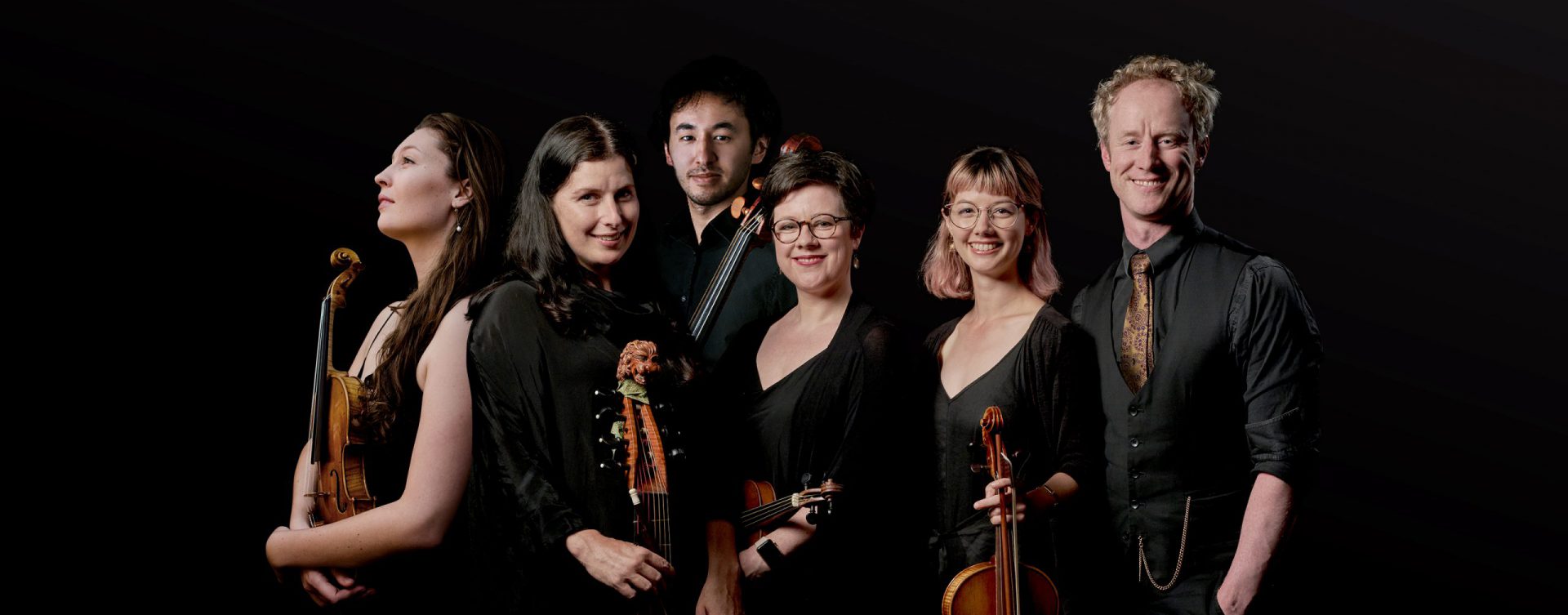An exemplar of baroque musical performance.
The program for this concert was very carefully curated. It was said to be centred on the theme of borders – geographic, emotional, and stylistic – which was made at once apparent by the fact that most composers in this program hailed from a Germany mired in the devastating Thirty Years’ War.
The concert opened with Becker’s Sonata a 5 in F. It is an exemplar of the early baroque. It opens with rapid changes between major and minor mode, a technique propounded by the likes of Uccellini, which gives a delicious chiaroscuro effect. And in a manner faithful to the stylistic demands of the times, the violins, played by Julia Fredersdorff and Simone Slattery, were always mellifluous and rich in expression, though they at times seemed rather restrained.
Next was Scheidt’s Galliard Battaglia. Scheidt, a student of Sweelinck, was known for his austere organ works. But his galliard shows a lighter style, bridging the stile antico and the more outwardly expressive seconda prattica. The programmatic focus on ‘the battle’ was one shared by Byrd in his ‘The Battell’, but this rendition is more playful, almost cheeky, which the ensemble realised through rapid dynamic contrasts. Naturally, the piece was originally scored for brass ensemble, but this instrumentation conveyed an affect of equal, if not greater, force. One could not help but be impressed when violinist Simone Slattery changed, effortlessly, from violin to recorder in the middle of the piece.
Becker was back with his Pavan a 5. It has one of the most heart-rending openings for strings, in a style redolent of the Abendmusiken composers in northern Germany, with Laura Vaughan and Anton Baba bringing out the stark and earthy timbre of the bass viol. Much the same tendency can be seen in Saint-Colombe’s Les pleurs. As its title suggests, it is a plaintive piece, and the stylistic influence on his famous pupil, Marin Marais, are immediately apparent. It begins with a rich E minor chord and, as one would expect from a French piece, is replete with trills that were articulated with impeccable precision by both Laura Vaughan and Anton Baba. Laura Vaughan ends on a delightfully soft E that wavers with an ever-so-slight vibrato into the silence.
Scheidt’s Courante is similarly contemplative. It is itself remarkable as an example of a French dance form employed by an early North German composer, some decades before Froberger made this common practice. What was even more remarkable was the violinists’ ability to tease out the most expressive range of the baroque violin .
The program’s focus on emotional borders is then borne out in Erlebach’s Chaconne, from his Ouverture No. 2. It is a joyous piece based on a bass-line surprisingly similar to that of Bach’s Goldberg Variations. Albinoni’s Sonata II in C Major from Sinfonia a 5 is in much the same vein. Surprisingly for a composer working in such a cosmopolitan city as Venice that was then on the borderline of musical invention, the sonata is in the traditional sonata di chiesa form of which Albinoni was particularly fond, alternating between two fugues and two slow movements. The first movement opened with a delightful canonic interplay between violins and traverses effortlessly between major and minor mode. Because of the pristine clarity with which the ensemble played this piece, one immediately gets a sense of Albinoni’s mastery of counterpoint and all forms of musical expression. But what was at times, as was the case with the Muffat, missing was the wild Italian verve that this piece demands.
Sigfusdottir’s Clockworking was a sheer turning point. Composed in 2013 by an Icelandic violinist, it employs the unique timbre of gut strings, particularly those of the viols, and a series of alternating intervals to give the effect of clockwork. But we are once again immersed in the sound-world of the early Baroque with the ‘Sonata Jucunda’. It starts off in a style faithful to its title – pleasant and agreeable. Though the work has not definitively been attributed to anyone, yet it has all the inventiveness of Biber. It is, also characteristic of Biber, rather taxing and difficult and play – it incorporates fiendishly-fast passages in musical modes redolent of Ottoman music (at a time when the Ottoman Empire was advancing toward Bohemia), percussive uses of the strings, and whimsical changes in dynamics. But it was no match for the Van Diemen’s Band, and it seems that the Band is most at home this type of fast-paced, almost folkish, music, which it played with an infectious energy.
Sticking with the Eastern theme, Donald Nicolson’s Spirals, composed by the Band’s resident harpsichordist in dedication to the people of Ukraine, creatively incorporates a famous Eastern Orthodox hymn. It begins in a style that is contemporary enough, but it is not long before chaconnes, fugues and cadences abound. It is a testament to the profound sense of musicality that is invested in this ensemble by its members.
This concert was a yardstick by which others should be compared. It went beyond the likes of Bach, Handel and Vivaldi, great as is the homage we all owe to them, to show us the richness of the early Baroque, and all in a way that gave an opportunity for each member of the ensemble to shine. Van Diemen’s Band is an ensemble that ought to be more known, and the mainland deserves to be graced more by its presence.
